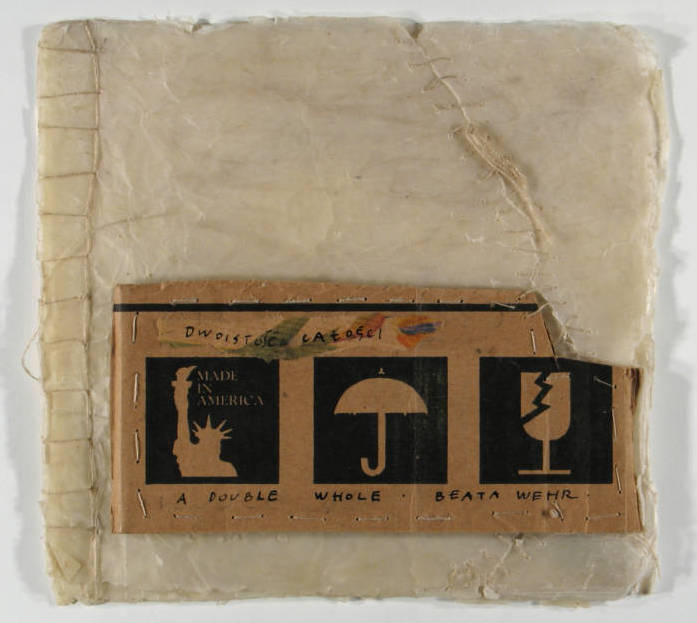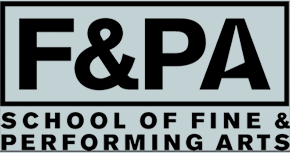
A Double Whole
Distinct from the artist-illustrated books and thematically arranged books of photographs, the genre known as artists’ books saw a rise in production in the 20th century. Artists’ books come in all traditional and sometimes eccentric forms and encompass a universal range of topics. Beata Wehr’s A Double Whole combines language and images in a handmade book of found materials. Wehr’s art comes from her personal immigrant experience as well as the universal experience of immigrants. Her use of these materials reflects the immigrant life built on acceptance of the prosaic elements one finds in a new place as a basis for a new life.
The book is pieced together, even mended, from used packaging and sewn with a Japanese or punch binding. The delicate white pages contrast with the heavier piece of cardboard stitched onto the first page as a cover, making the act of turning the pages—the sine qua non of the book experience—feel precarious; one is immediately cautioned to proceed carefully. The handwritten words are Polish, Wehr’s native language, and English, her adopted language. The words are written on the scrap of cardboard, also containing printed images which are icons: the Statue of Liberty, representing the United States, her adopted home; an umbrella, a symbol for protection from rain, perhaps a joke on her new Arizona desert home, and in a universal sense, protection from hazards; and the lightning bolt, a sign of cataclysmic change, which can also be read as a cracked glass, the sign for fragile, here a reference to the psychological state of displacement. Words and images speak to the duality of her persona and reveal that she has integrated her life experiences from both cultures into the artist she is today.

